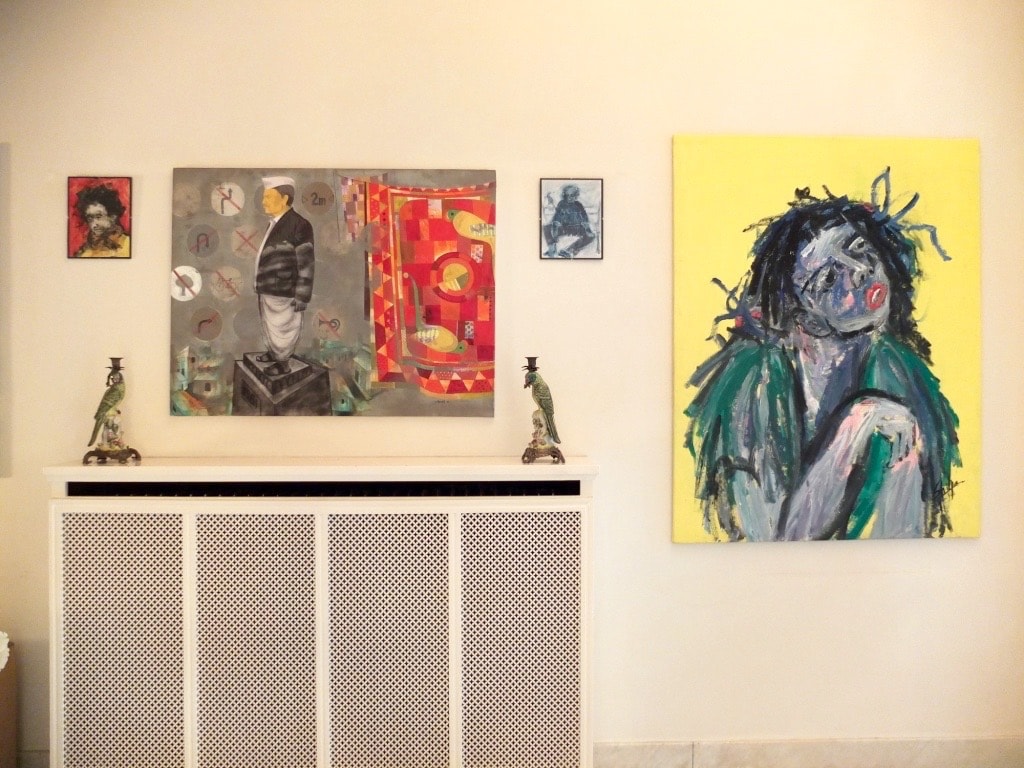Pushing Boundaries
A Powerful Player in The Arts Game
Katharina Domscheit Shares Her Artistic Expertise With The People of Goa
| “A curator is like a custodian of art,” says Katharina Domscheit. German-born and educated in England, Katharina is helping catapult Goa to the forefront of the global arts scene by curating some of the most unusual and visually pleasing art seen in the state. When folks talk of Goa as an international arts hub and how the state is attracting a growing cadre of art connoisseurs, it’s people like Katharina they have in mind. |
Katharina has a degree in History of Art and Film Studies, and a Masters in Arts Management and Policy, acquired during her 12 years in England. She has been living in Ribandar, Goa, for the last two years.
“Before selecting the art, you need to think through every exacting detail, leaving nothing to chance,” she explains. “This requires a lot of preliminary research, overseeing production details and working well with others, as it takes many skilled people to put on an exhibition.”
Curator or curatorem in Latin means overseer, guardian, or agent. This overseer is a vital link in the art fraternity. A ‘star’ curator can easily make or break an artist’s career.Curators have to beknowledgeable in art culture, and need a passion and an ‘eye’ for the art they exhibit. Many are educated in art history. They are mediators between galleries, museums, artists and the public. They need to multi-task, and be skilled in business communication, marketing, public relations, and fundraising. They have to write catalogue essays and promotional material for their shows, so they need good writing skills too.
“I’ve come to Goa with the intention of contributing to the art scene in India, to raise awareness about the positive change that can result from visual arts, by getting involved in the artists’ work,” says Katharina. This desire to push boundaries through visual art propelled her to create ‘Peppina Art’, a platform for curatorial works, workshops and artist mentoring.
Last November, she was invited to Kolhapur, to speak on how Indian artists could approach European art markets to develop their career. Her recent sessions atthe Kokum Design Centre atPorvorim in North Goa, on ‘How Art Can Create Change’, explored the power of art and culture for economic and personal benefits. The three-day workshop explained the impact that the visual arts have on the individual and people, and highlighted the power of the artist and the curator. Despite the low turnout of artists for the interactive workshop, she noticed a desire to learn among those who attended. She interacted with themon developing their careers and on the importance of archiving their works.
This sensitive curator believes in building a relationship with artists and getting acquainted with the background of the artist to relate to the work. She then guides them to exhibitions to promote their work. She has thus promoted several young and mid-career artists, who are doing quite well now.
Katharina curated exhibitions of contemporary international and postmodern British artists at City Hall, South Bank Centre and the Regents Canal Festival in London in 2012. She also mentored a group exhibition titled ‘Pushing Boundaries’ in May this year at Bonn, Germany. It featured the works of four Indian artists: Praveen Naik and ShilpaNasnolkar from Goa, and Malika Das Sutar and Pradip Das from Kolkata. She also curated Japanese artist KitaMika’scurrent exhibit at Cube Gallery in Moira, Goa, on display until Dec. 12.
The curator’s expertise also comes forth in how the works are ‘hung’. ‘Hanging a show’ is art parlance for the technique that guides the flow and threads the display. The curator has to consider intriguing juxtapositions between artworks, and to create an interesting dialogue between the works and the audience.
“It’s upto the artist how they want their work to be displayed,” says Katharina. “Sometimes it’s good to group one artist’s paintings together. Sometimes segregating one style of art—say, landscapes, portraiture, abstracts, etc.—of one or many artists makes a good equation.”
On seeing Indian artists from an international perspective, she says, “It’s difficult to look at the context from within, if you’re not from that country. Older and contemporary artists have pushed boundaries and aesthetically shifted to broader horizons. They are thinking beyond, placing India on a global platform, like the contemporary artist JitishKallat, who gives a lot to the Indian art scene.”
What does Katharina think of the art scene in Goa? “There’s much more scope for development, it requires more attention,” she opines. “One group of senior and younger artists regularly achieves exposure and sales, but is unable to move forward. Younger artists have a different mindset. They utilize art as a medium to address current issues and thus impact the growth of the art scene.”
Katharina is presently working on showing Indian artists in March next year in Mumbai, and KitaMika’s works in Germany or London.
Katharina can be contacted at: peppinaart@gmail.com








This actually answered my problem, thankyou!